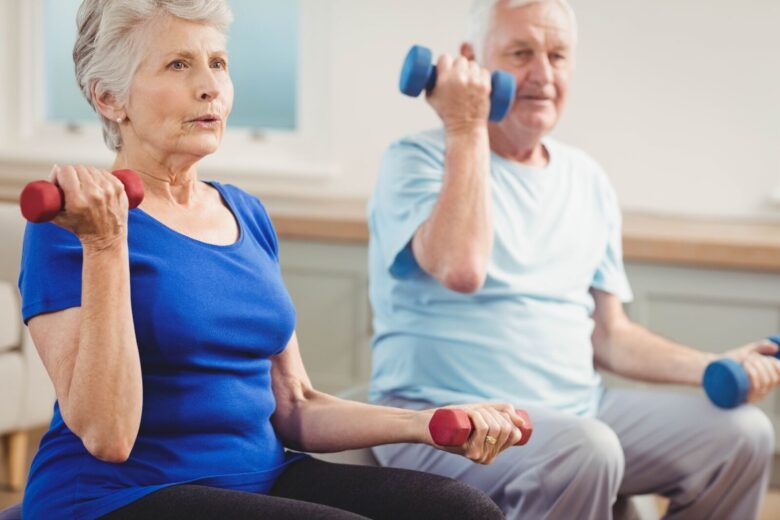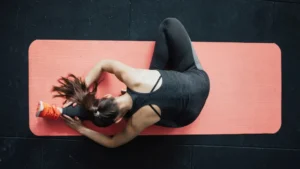As we age, it is more important than ever to stay active. Regular exercise is important for seniors to maintain independence, improve mobility, reduce the risk of chronic disease, and improve their overall quality of life. Many seniors worry that exercise will harm them. However, when done properly, exercise is safe and beneficial. It is important to choose an activity that suits your needs, fitness level, and physical condition. Gentle, low-impact exercise can be very beneficial to your health without putting too much strain on your body.
Seek Medical Advice Before Starting
Seniors should consult with a healthcare provider before beginning an exercise program. A physician or athletic trainer can evaluate the patient’s health and make recommendations specific to their needs. People with osteoporosis, arthritis, heart disease, or balance problems may need to be extra careful. Talking to your doctor can help prevent problems and ensure that exercise improves your health instead of worsening it. This first step gives seniors peace of mind and helps them recover safely.
Start Slowly with Gentle Movements
People 65 and older should start slowly, especially if they have not exercised for a while. A brisk walk, simple stretches, or exercises in a chair can warm up the body and make it more flexible. Starting slowly also reduces the chance of muscle injuries or soreness and gives the body time to get used to new movements. The goal is not to be intense, but to be persistent. By gradually increasing your activity, you can build strength and endurance without overtaxing your body. Patience and perseverance are much more effective than trying to push too hard too soon.
Emphasis on Balance and Flexibility
Older people are more prone to falls. That is why balance and flexibility exercises are an important part of a senior fitness program. Tai chi, yoga, and standing leg raises are all gentle exercises that can help you improve your coordination and strengthen your supporting muscles. Better balance reduces the chance of falling and gives you more confidence as you walk, climb stairs, and turn around every day. Staying flexible will help keep your joints healthy, reduce stiffness, and make it easier to move and perform daily tasks without pain.
Light Resistance, Strength Building
People of all ages can do strength training. Light resistance training is especially beneficial for older adults because it can improve muscle strength and bone health. Using resistance bands, light bars, or even your own body weight can help you maintain your muscle mass and prevent it from declining as you age. Stronger muscles allow you to stand up straighter, maintain your balance, and reduce the stress on your joints. With just two to three sessions per week, you’ll see results that can make it easier to do things like run errands or get out of a chair.
Add Low-impact Aerobic Exercise
A healthy heart is important for everyone, regardless of age. Older adults should participate in low-impact aerobic activities like walking, swimming, stationary bikes, or water aerobics. These activities increase your heart rate without putting too much stress on your joints. Doing 20 to 30 minutes of aerobic exercise most days of the week can help your heart work better, improve your well-being, and expand your lungs. To stay motivated, seniors should do things they enjoy and make exercise a regular part of their daily routine.
Chair Exercises for People with Limited Mobility
For seniors who are less mobile or who are recovering from surgery or illness, chair exercises are a safe way to stay active. Exercises that you can do while seated include leg raises, arm raises, heel rolls, and seated marching. Chair exercises make you stronger, more flexible, and less likely to fall. They can also reduce the risk of joint stress and improve circulation. Plus, you can easily do these exercises at home, which is a great way to ease your way back into physical activity. Even these small changes can have a big impact on how a person feels and functions.
Staying Hydrated and Listening to the Body
People often forget to drink water, but it is very important when doing any physical activity, especially for seniors. Drinking water before, during, and after exercise helps keep your body temperature stable and prevents fatigue or dizziness. It is also important to pay attention to your body’s signals. If you feel pain, stop and rest. It is better to keep a pace that does not hurt you than to push yourself too hard. Exercising is safer and more enjoyable when people know when they are tired and when to rest.
Setting Realistic Goals and Staying Motivated
Setting achievable goals can help seniors stay focused and feel like they have accomplished something. Setting small goals, such as taking a certain number of steps each day or becoming more flexible in a few weeks, can help keep you motivated and give you a sense of progress. Keeping a fitness journal or using a simple app to track your workouts can also help. Sometimes you have a bad day, but the most important thing is to keep going and not give up. Celebrating small victories can boost self-confidence and help people commit to their health and well-being in the long run.
Exercise with Friends or a Group
Exercising with friends or a group can make it more fun and help seniors maintain a routine. Seniors can meet new people and find support through group fitness classes, walking clubs, and even online fitness communities. Exercising with others can improve your mood, give you a greater sense of responsibility, and make going to the gym more enjoyable. Participating in social activities can also help improve your mental health by reducing loneliness and encouraging a positive attitude toward aging and health.
Conclusion
Exercise is one of the best ways to stay healthy, independent, and happy in old age. Exercise doesn’t have to be difficult or strenuous to be safe and good for you. When seniors get the right help, do simple exercises, and stick to a routine, they can become stronger, better balanced, and enjoy life more. The most important thing is to choose tasks that you enjoy and that fit your skills. Being active can help anyone, regardless of age, stay independent longer, feel better physically and mentally, and enjoy life to the fullest.
FAQs
1. Can older people who have never exercised start exercising now?
Yes, but start slowly and talk to your doctor to develop a plan that suits your health.
2. What type of exercise is best for people 65 and older with arthritis?
Low-impact exercises, such as walking, swimming, or chair yoga, can help relieve joint pain and make it easier to move without putting too much strain on your body.
3. How many times a week should older adults exercise?
Older adults should try to get at least 150 minutes of moderate-intensity exercise each week. This can be achieved by doing several shorter sessions per day.
4. Is strength training safe for adults?
Using small weights or resistance bands properly and with assistance can help strengthen your muscles and increase bone density.
5. Are there sports that adults with limited mobility can do?
Yes. Even if you can’t move, chair exercises, stretching, and slow, gentle movements can get your blood flowing and keep your muscles active.




